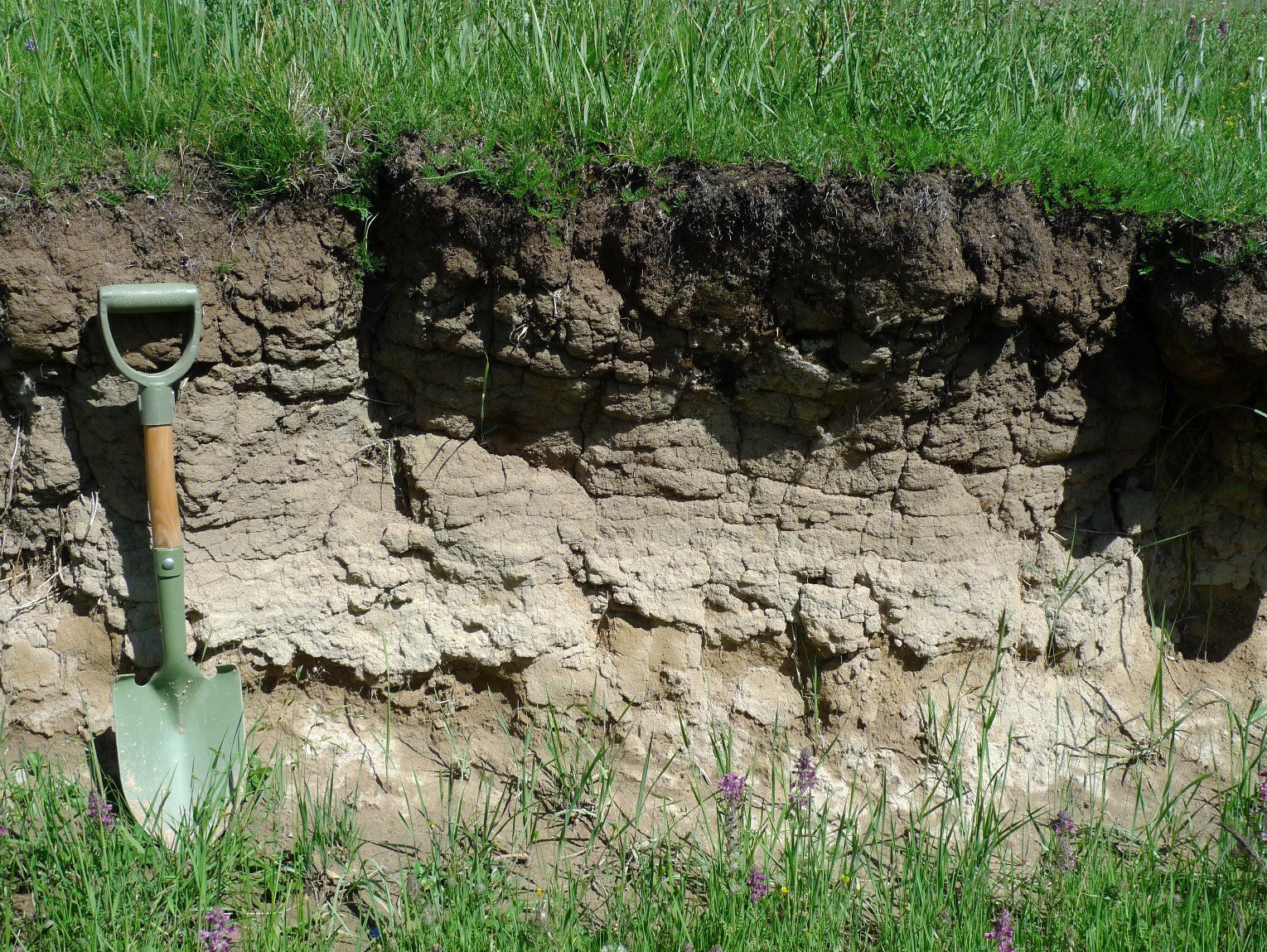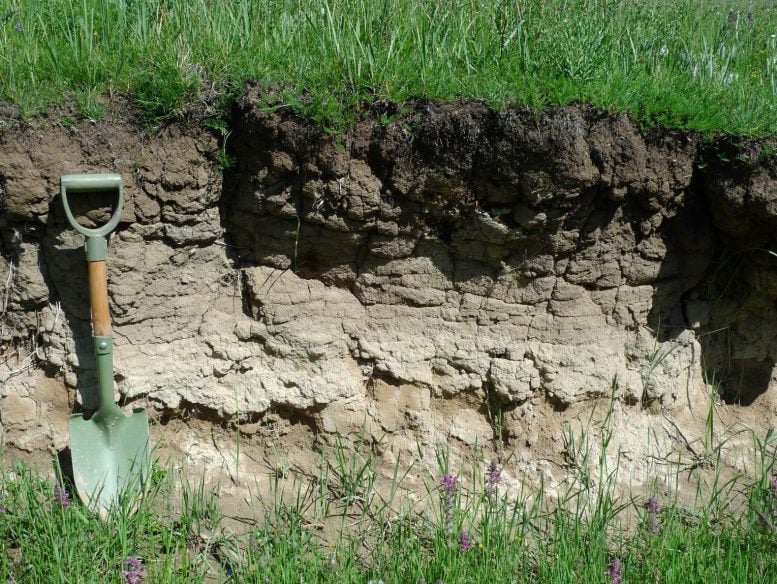
Scientists Discover Gigantic Global Reserve of Soil Carbon Underground
-
by Anoop Singh
- 9

The upper solum (mollic epipedon) shows a dark color because of the heavy accumulation of organic matter, while the lower solum (calcic horizon) is whitish due to the presence of calcium carbonate. The soil type is Calcic Molli-Ustic Cambosols according to Chinese Soil Taxonomy. Credit: Zhang Ganlin
Soil carbon typically refers to the organic component, termed soil organic carbon (SOC). However, there is also an inorganic component, referred to as soil inorganic carbon (SIC), which is often composed of substances like calcium carbonate. SIC commonly accumulates in arid, less fertile regions, which has led many to believe it is not important.
In a study published in Science, researchers led by Prof. Huang Yuanyuan from the Institute of Geographic Sciences and Natural Resources Research of the Chinese Academy of Sciences (CAS) and Prof. Zhang Ganlin from the Institute of Soil Science of CAS, together with collaborators, have quantified the global store of SIC, challenging this long-held view.
The researchers found a whopping 2,305 billion tons of carbon stored as SIC in the top two meters of soil worldwide, which is more than five times the carbon found in all of the world’s vegetation combined. This hidden pool of soil carbon could be key to understanding how carbon moves around the globe.
Environmental Vulnerability of SIC
“But here’s the thing: This huge carbon pool is vulnerable to changes in the environment, especially soil acidification. Acids dissolve calcium carbonate and remove it either as carbon dioxide gas or directly into the water,” said Prof. Huang.
“Many regions in countries like China and India are experiencing soil acidification due to industrial activities and intense farming. Without remedial actions and better soil practices, the world is likely to face a disturbance of SIC in the next thirty years,” she added.
Disturbances to SIC accumulated over Earth’s history have a profound impact on soil health. This disruption compromises the soil’s ability to neutralize acidity, regulate nutrient levels, foster plant growth, and stabilize organic carbon. Essentially, SIC plays a critical dual role in storing carbon and supporting ecosystem functions that depend on it.
Carbon Loss and the Need for Inclusion in Climate Strategies
The researchers revealed that approximately 1.13 billion tons of inorganic carbon are lost from soils to inland waters each year. This loss has profound but often overlooked implications for carbon transport between the land, atmosphere, freshwater, and ocean.
While society has recognized the importance of soils as a fundamental part of nature-based solutions to combat climate change, much of the focus has been on SOC. It is now clear that inorganic carbon deserves equal attention.
This study underscores the urgency of incorporating inorganic carbon into climate change mitigation strategies as an additional lever for maintaining and enhancing carbon sequestration. International programs such as the “4 per mille initiative,” which aims to increase (mostly) SOC by 0.4% annually, should also consider the critical role of inorganic carbon in achieving sustainable soil management and climate mitigation goals.
By broadening the understanding of soil carbon dynamics to include both organic and inorganic carbon, the researchers hope to develop more effective strategies for maintaining soil health, enhancing ecosystem services, and mitigating climate change.
Reference: “Size, distribution, and vulnerability of the global soil inorganic carbon” by Yuanyuan Huang, Xiaodong Song, Ying-Ping Wang, Josep G. Canadell, Yiqi Luo, Philippe Ciais, Anping Chen, Songbai Hong, Yugang Wang, Feng Tao, Wei Li, Yiming Xu, Reza Mirzaeitalarposhti, Heba Elbasiouny, Igor Savin, Dmitry Shchepashchenko, Raphael A. Viscarra Rossel, Daniel S. Goll, Jinfeng Chang, Benjamin Z. Houlton, Huayong Wu, Fei Yang, Xiaoming Feng, Yongzhe Chen, Yu Liu, Shuli Niu and Gan-Lin Zhang, 11 April 2024, Science.
DOI: 10.1126/science.adi7918
The upper solum (mollic epipedon) shows a dark color because of the heavy accumulation of organic matter, while the lower solum (calcic horizon) is whitish due to the presence of calcium carbonate. The soil type is Calcic Molli-Ustic Cambosols according to Chinese Soil Taxonomy. Credit: Zhang Ganlin Soil carbon typically refers to the organic component,…
The upper solum (mollic epipedon) shows a dark color because of the heavy accumulation of organic matter, while the lower solum (calcic horizon) is whitish due to the presence of calcium carbonate. The soil type is Calcic Molli-Ustic Cambosols according to Chinese Soil Taxonomy. Credit: Zhang Ganlin Soil carbon typically refers to the organic component,…
